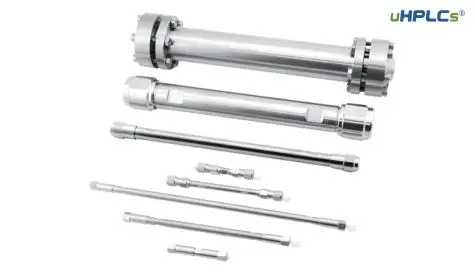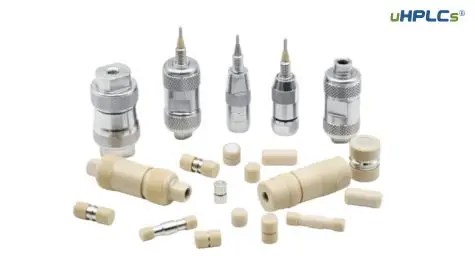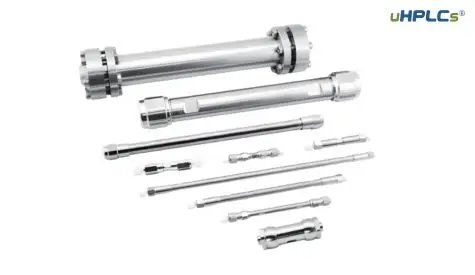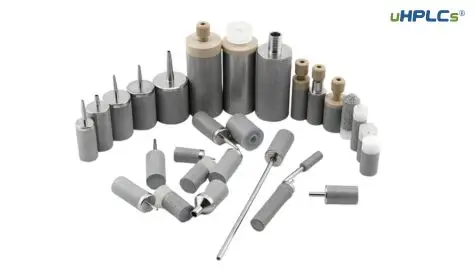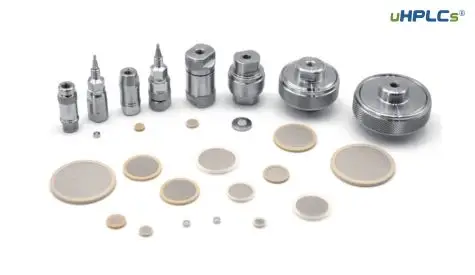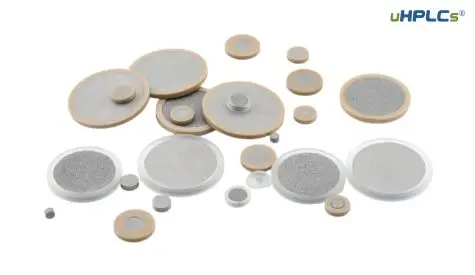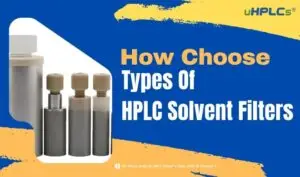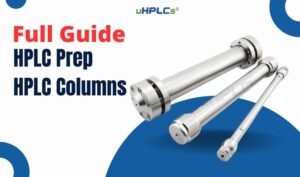High-performance liquid chromatography (HPLC) is a powerful analytical technique used to separate and identify components of a mixture based on their polarity and size. It’s like a super-powered filtering system that can distinguish between even the most closely related molecules.
Imagine a tiny racetrack where each molecule is a racecar. The racetrack is lined with a special material that attracts or repels certain types of cars. The more attracted a car is to the material, the slower it goes. By carefully choosing the racetrack material and the speed of the cars (the mobile phase), we can separate the different types of cars (the analytes).
Part 1: Characteristics of Acetonitrile
HPLC works in a similar way. The mixture is injected onto a column packed with tiny particles coated in a special material. A solvent (the mobile phase) flows through the column, carrying the analytes with it. The analytes interact with the stationary phase (the column coating) at different strengths. Those that are more attracted to the stationary phase move slower, allowing the faster ones to zoom ahead and be separated.
HPLC is widely used in various fields, including:
- Pharmaceutical analysis: Identifying and quantifying drugs in medicine
- Food science: Detecting contaminants and analyzing food components
- Environmental analysis: Monitoring pollutants in water and soil
- Forensic science: Identifying drugs and other chemicals in evidence
Solvent Selection: The Right Tool for the Job
The mobile phase plays a crucial role in HPLC. It’s like the conductor of the racetrack orchestra, setting the pace and influencing how the analytes interact with the column. Choosing the right solvent depends on several factors, including:
- Polarity of the analytes: Similar polarity analytes will have similar interactions with the stationary phase, making separation difficult. We need solvents that can tease them apart.
- Desired separation: A weak solvent might not separate strongly interacting analytes, while a strong one could push everything through the column too quickly. It’s a balancing act!
- Column compatibility: Some solvents can damage the stationary phase, so we need to choose one that plays nicely with the column.
Acetonitrile: The Speedy Solvent
Acetonitrile (ACN) is one of the most popular HPLC solvents due to its versatility and favorable properties:
- High polarity: It can dissolve a wide range of analytes, from polar to moderately non-polar.
- Miscibility with water: It allows for the creation of mobile phases with varying strengths, enabling fine-tuning of the separation.
- Low viscosity: It flows easily through the column, ensuring efficient separation.
- Low UV absorbance: It minimizes interference with UV detection, allowing for sensitive analysis of analytes.
However, acetonitrile also has some drawbacks:
- Toxicity: It needs to be handled with care due to its potential health risks.
- Flammability: It’s important to follow safety precautions when working with it.
- Cost: Compared to other solvents, it can be more expensive.
Despite these limitations, acetonitrile remains a valuable tool in the HPLC toolbox. Its speed, versatility, and compatibility with various detectors make it a go-to solvent for many analyses.
In the next part, we’ll delve deeper into the specific applications and considerations of using acetonitrile in HPLC. Stay tuned!
Acetonitrile: The Speedy Solvent in Focus
Acetonitrile, with its chemical formula CH₃CN, is a nitrile organic compound that reigns as one of the most popular solvents in HPLC. Let’s dive into its chemical properties and compare it to other organic solvent contenders.
Chemical Properties of Acetonitrile:
- Physical state: Colorless liquid with a faint, sweet odor.
- Molecular weight: 41.05 g/mol
- Boiling point: 81.6°C
- Melting point: -43.8°C
- Density: 0.786 g/mL
- Polarity: Highly polar due to the cyano group (-CN)
- Miscibility: Miscible with water and most organic solvents, except for alkanes.
- Viscosity: Lower viscosity than water, allowing for faster flow through columns.
- UV absorbance: Low absorbance in the UV range, minimizing interference with detection.
Acetonitrile vs. Other Organic Solvents:
| Feature | Acetonitrile | Methanol | Ethanol | Acetone |
|---|---|---|---|---|
| Polarity | High | High | High | Moderate |
| Miscibility with water | Excellent | Excellent | Excellent | Excellent |
| Viscosity | Low | Low | Low | Low |
| UV absorbance | Low | Moderate | High | High |
| Toxicity | Moderate | High | Low | Low |
| Cost | Moderate | Low | Low | Low |
Comparison Highlights:
- Acetonitrile’s high polarity enables it to dissolve a wide range of analytes, from polar to moderately non-polar. This makes it a versatile choice for diverse separations.
- Its excellent miscibility with water allows for the creation of mobile phases with varying strengths, offering fine-tuned control over the separation process.
- Low viscosity promotes efficient flow through the column, leading to faster analysis times.
- Low UV absorbance minimizes interference with UV detection, particularly important for sensitive analysis of analytes.
- Compared to methanol and ethanol, acetonitrile exhibits moderate toxicity, requiring careful handling. Acetone, on the other hand, is considered less toxic.
- Cost-wise, acetonitrile sits in the moderate range, while methanol and ethanol are generally cheaper.
While other solvents like methanol and ethanol offer similar advantages, their higher UV absorbance or potential for column damage can limit their applicability. Acetone’s lower polarity also restricts its range of suitable analytes.
Overall, acetonitrile’s unique blend of properties makes it a champion solvent in HPLC, especially for analyzing diverse mixtures with UV detection. Its versatility, efficiency, and compatibility with various detectors solidify its place as a top choice for chromatographers.
In the next section, we’ll explore the specific applications and considerations for using acetonitrile in HPLC, along with tips for handling this powerful solvent safely.
Part 2: Check Advantages of Using Acetonitrile in HPLC
Acetonitrile’s reign as a top HPLC solvent isn’t just based on its chemical properties; it’s the cascade of advantages it brings to the table that truly sets it apart. Let’s delve into the specific benefits that make acetonitrile a favorite among chromatographers:
1. Solvent Strength: The Art of Separation Finesse
Acetonitrile’s solvent strength lies in its sweet spot – not too strong, not too weak. It can elute a wide range of analytes while maintaining good peak resolution. Imagine it as a gentle nudge, pushing analytes through the column at just the right speed to separate them without overlapping.
This “just right” strength can be further fine-tuned by mixing acetonitrile with water to create mobile phases of varying strengths. This allows us to tailor the separation to the specific analytes and desired resolution, making acetonitrile a versatile tool for diverse chromatographic challenges.
2. Low Viscosity: Speedy Flow, Happy Column
Acetonitrile’s low viscosity compared to water is like a superhero cape for your HPLC system. It allows the mobile phase to flow smoothly through the column, minimizing backpressure and reducing wear and tear on the pump. This translates to:
- Faster analysis times: Analytes spend less time stuck in the column, leading to quicker results.
- Reduced column clogging: Low viscosity minimizes the risk of tiny particles blocking the column pores, ensuring longer column lifespan.
- Efficient use of mobile phase: Less pressure is needed to pump the solvent, saving on valuable acetonitrile.
3. UV Detection: Seeing is Believing
Acetonitrile’s low UV absorbance is like having a clear window to your analytes. Unlike some other solvents that soak up UV light, acetonitrile allows for sensitive detection of analytes at low concentrations, especially when using UV detectors. This is crucial for:
- Trace analysis: Detecting even minute amounts of analytes in complex mixtures.
- Structure elucidation: Studying the UV spectra of analytes for structural information.
- Quantitative analysis: Accurately measuring the concentration of analytes based on their UV absorbance.
4. Chemical Stability: A Reliable Partner
Acetonitrile is a rockstar in terms of chemical stability. It’s non-reactive with most analytes and column materials, minimizing the risk of unwanted side reactions that could distort results. This makes it a reliable partner for:
- Analyzing sensitive molecules: Ensuring the integrity of analytes prone to degradation.
- Long-term storage of samples: Preventing analyte decomposition in sample vials.
- Reproducible results: Consistent chromatography data due to minimal chemical interference.
5. Gradient Elution: A Symphony of Separation
Acetonitrile truly shines in gradient elution, where the mobile phase composition continuously changes during the run. Its miscibility with water allows for seamless transitions between weak and strong solvent conditions, enabling:
- Targeted separation of diverse analytes: Polar analytes elute first with weak solvent, followed by less polar ones as the mobile phase strengthens.
- Improved peak resolution: Gradients can gently tease apart closely eluting analytes for clearer identification and quantification.
- Method optimization: Fine-tuning the gradient profile for optimal separation of specific analytes.
These are just some of the numerous advantages that make acetonitrile the go-to solvent for many HPLC applications. Its potent combination of solvent strength, low viscosity, UV compatibility, chemical stability, and gradient elution prowess make it a true champion in the realm of HPLC separations.
However, even with its superpowers, acetonitrile isn’t without its limitations. In the next section, we’ll explore the potential drawbacks and safety considerations associated with this versatile solvent.
Part 3: Know The Role of Acetonitrile in Separation Process
Acetonitrile doesn’t just sit passively in the mobile phase; it actively plays a key role in the separation process, wielding its solvent strength like a conductor’s baton to guide the analytes through the column. Let’s see how it affects the key aspects of separation:
Retention Time: Imagine the column as a racetrack and the analytes as cars. Acetonitrile acts like the track surface – the more polar the acetonitrile-water mix, the “grippier” the surface becomes. This slows down polar analytes, making them spend more time on the track (increasing their retention time). Conversely, less polar analytes zip through the track more quickly due to weaker interactions with the acetonitrile (decreasing their retention time).
By adjusting the acetonitrile concentration, we can fine-tune the “grip” of the racetrack, influencing how long each car (analyte) stays on it. This allows us to:
- Separate analytes based on their polarity: Polar ones get “stuck” longer, while non-polar ones speed past, resulting in different retention times and clear separation.
- Optimize resolution: By playing with the acetonitrile gradient, we can create a “sweet spot” where analytes with similar polarities elute slightly apart, making them distinguishable.
Resolution and Selectivity: Think of resolution as how clearly you can see two cars racing side-by-side. Acetonitrile helps us achieve good resolution by:
- Spreading out the analytes: By influencing their retention times, it creates space between them as they travel through the column, making them easier to distinguish.
- Enhancing selectivity: The “grip” of the acetonitrile-water mix can be tailored to favor the interaction of certain analytes with the column over others. This allows us to selectively target and separate specific analytes from a mixture.
Acetonitrile’s Ideal Separations:
- Pharmaceuticals: Separating drugs and their metabolites with varying polarities.
- Food analysis: Identifying and quantifying food additives, contaminants, and natural components.
- Environmental analysis: Detecting pollutants and monitoring water quality.
- Natural products: Isolating and purifying bioactive compounds from plants and herbs.
- Forensic science: Analyzing drugs, explosives, and other evidence components.
These are just a glimpse into the diverse applications where acetonitrile’s separation prowess shines. Its ability to manipulate retention times, enhance resolution, and offer selectivity makes it a versatile tool for tackling complex analytical challenges.
However, like any powerful tool, acetonitrile needs to be handled with caution. In the next section, we’ll delve into the safety considerations and responsible practices for working with this potent solvent.
Part 4: Alternative Solvents in HPLC
While acetonitrile reigns supreme in many HPLC applications, several other solvents deserve recognition for their unique strengths and suitability for specific situations. Let’s broaden our horizons and explore some common alternatives:
Methanol: This close relative of acetonitrile shares its high polarity and miscibility with water, making it a versatile choice. However, its slightly lower boiling point and higher UV absorbance can limit its applicability compared to acetonitrile. Methanol is often preferred for:
- Analysis of early-eluting analytes: Its lower boiling point allows for faster flow rates and shorter analysis times.
- Detection at longer wavelengths: Its lower UV absorbance in the mid-UV range enables detection of analytes that acetonitrile might obscure.
Water: The unsung hero of HPLC, water plays a crucial role in mobile phase composition, even when not the main solvent. Its low cost, non-toxicity, and ability to adjust solvent strength make it invaluable. However, its weak elution power limits its use for separating non-polar analytes. Water shines in:
- Normal-phase chromatography: Where water acts as the strong solvent, separating polar analytes based on their hydrophobicity.
- Gradient elution: Its ability to mix seamlessly with other solvents allows for fine-tuning the mobile phase strength.
Ethanol: This greener alternative to methanol offers similar polarity and miscibility with water, but with lower toxicity. However, its higher boiling point and UV absorbance can be drawbacks. Ethanol is often chosen for:
- Bio-based analysis: Its naturally derived nature makes it appealing for analyzing plant extracts and other bio-samples.
- Preparative HPLC: Its lower toxicity is preferable when isolating larger quantities of analytes for further analysis.
Acetone: This moderate polarity solvent bridges the gap between acetonitrile and water. Its miscibility with water and low viscosity make it useful for:
- Separating mid-polarity analytes: Where acetonitrile might be too strong and water too weak.
- Cleaning and regeneration of columns: Its ability to dissolve a wider range of contaminants makes it effective for column maintenance.
Choosing the Right Solvent:
The “best” solvent depends on your specific analytical goals. Consider factors like:
- Polarity of analytes: Match the solvent’s polarity to your analytes for optimal separation.
- Desired resolution: Choose a solvent that promotes sufficient space between eluting peaks.
- Detection method: Consider the solvent’s UV absorbance to avoid interference.
- Safety and cost: Balance toxicity and environmental impact with affordability.
Acetonitrile may be the star player, but the HPLC solvent ensemble offers diverse strengths. By understanding the unique properties of each solvent and their interplay with analytes and detection methods, you can orchestrate the perfect separation symphony for your analytical needs.
How to Choose Right Solvent Filter for HPLC system
Solvent filtration is a crucial step in HPLC to protect your valuable equipment and ensure high-quality results. But with so many filter options available, choosing the right one can feel overwhelming. Worry not! This guide will equip you with the knowledge to select the perfect filter for your specific HPLC needs.
Factors to Consider:
- Solvent type: Different solvents have varying chemical properties and require compatible filter materials. For example, acetonitrile needs a filter that can withstand its harshness, while water-based solvents might be fine with nylon or PTFE.
- Filter pore size: This determines what particles are blocked. A smaller pore size (e.g., 0.45 µm) removes more contaminants but can also restrict flow and increase backpressure. Larger pores (e.g., 4.5 µm) allow faster flow but might let smaller particles through, potentially damaging your column or detector.
- Filter diameter: Choose a size suitable for your sample volume and funnel. Smaller filters (e.g., 13 mm) are ideal for syringes, while larger ones (e.g., 47 mm) handle bigger volumes more efficiently.
- Filter housing: Consider if you need a disposable filter cartridge for quick changes or a reusable housing for cost-effectiveness. Some housings offer additional features like pressure gauges or pre-filters for enhanced protection.
- Budget: Filter prices vary depending on material, size, and brand. Determine your budget and prioritize features that align with your needs.
uHPLCs: Your Partner in Solvent Filtration
uHPLCs is a leading manufacturer of high-quality sintered metal solvent filters specifically designed for HPLC applications. Their filters boast:
- Exceptional chemical resistance: Withstands aggressive solvents like acetonitrile and methanol.
- Precise pore sizes: Ensures optimal filtration efficiency without sacrificing flow rate.
- Reusable and cleanable: Saves money and reduces waste compared to disposable filters.
- Durable construction: Built to withstand high pressures and repeated use.
- Variety of options: Offers different pore sizes, diameters, and housings to fit diverse needs.
Choosing uHPLCs filters can provide several benefits:
- Protect your HPLC system: Minimize wear and tear on pumps, columns, and detectors.
- Extend column life: Prevent clogging and ensure consistent performance.
- Improve data quality: Eliminate artifacts caused by unwanted particles.
- Reduce downtime: Easy cleaning and reusability minimize filter changes.
- Cost-effective: Saves money compared to frequent disposable filter replacements.
Conclusion:
Choosing the right solvent filter for your HPLC system requires careful consideration of your specific needs and the properties of your solvents. By understanding the factors at play and exploring the advantages of uHPLCs’ sintered metal filters, you can confidently select the perfect solution for optimal performance, protection, and value in your HPLC analyses.
Remember, uHPLCs is your trusted partner in solvent filtration. They are happy to answer your questions and help you find the ideal filter for your HPLC setup. Don’t hesitate to contact them for expert advice and personalized recommendations.



